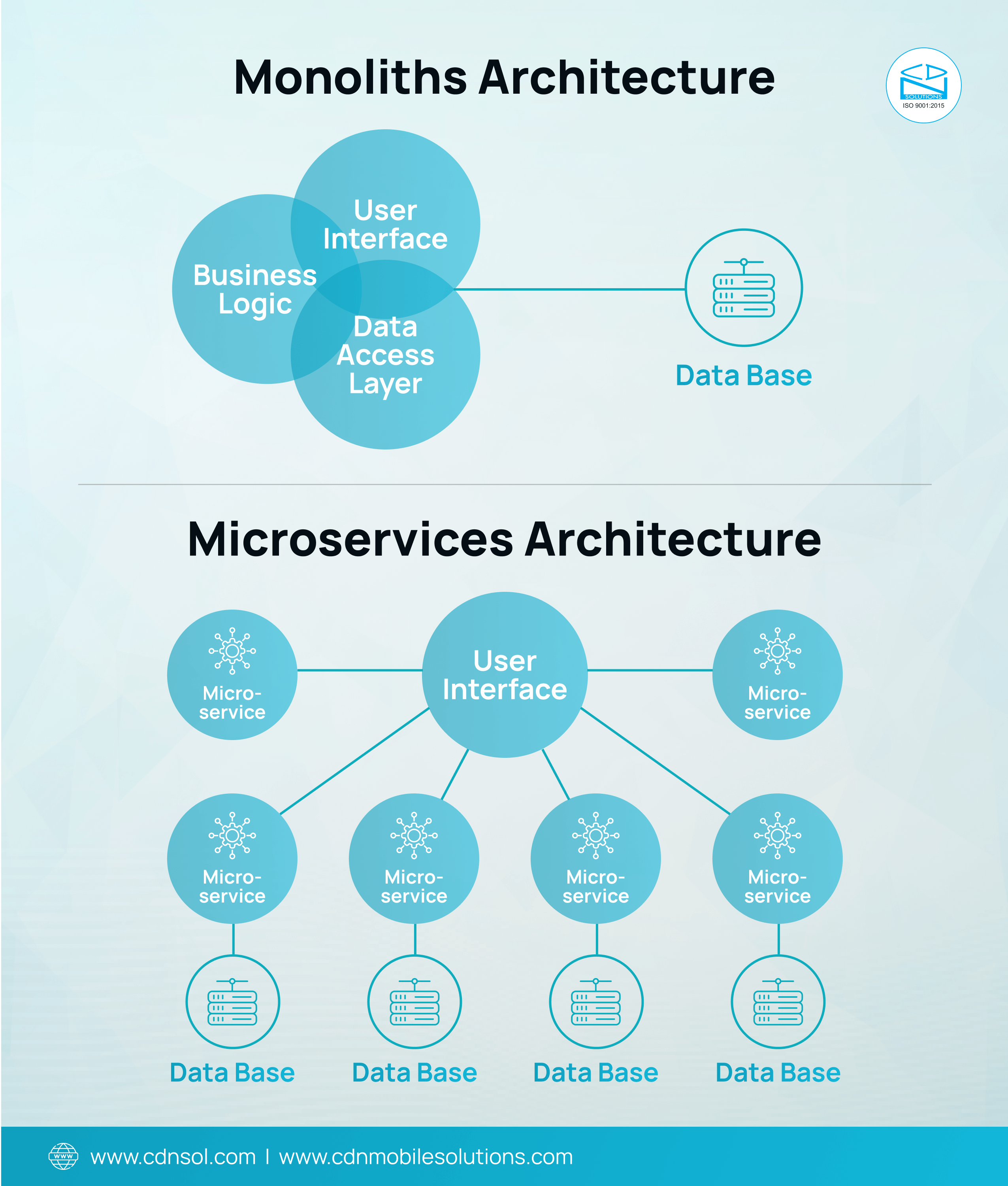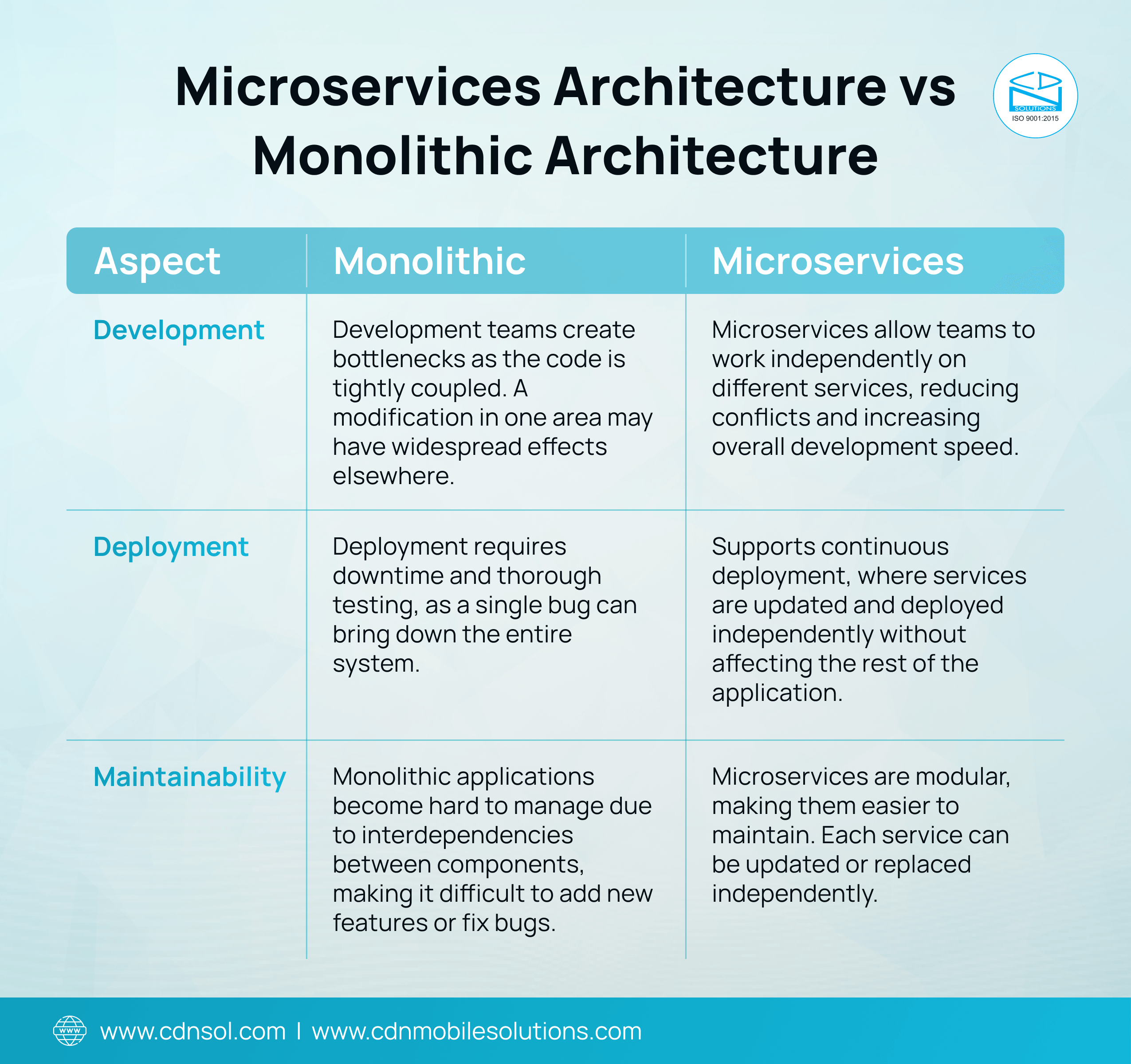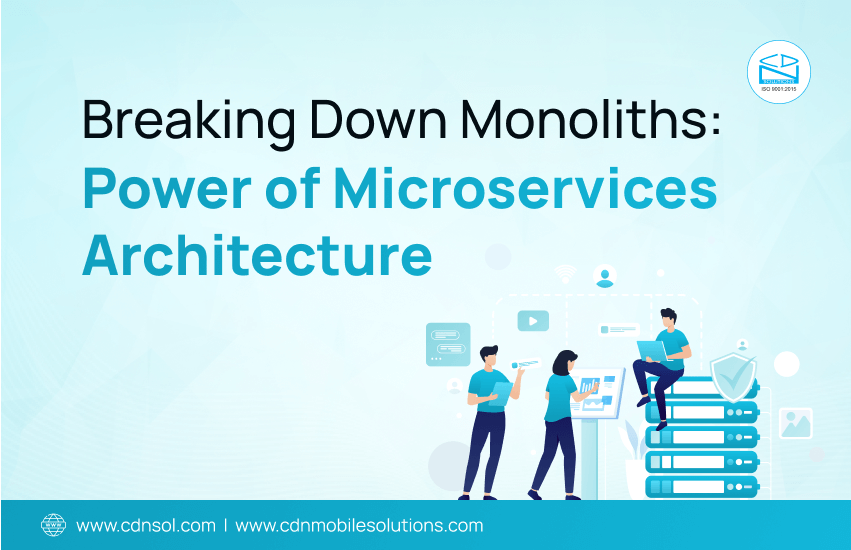This fast-moving digital era is putting pressure on every business to scale up rapidly, deploy efficiency, and adapt to the ever-changing market demands. IT service providers using their legacy of monolithic architectures fail to answer these modern challenges. Microservices architecture is the emerging revolution that leading tech giants like Netflix, Amazon, and Uber are embracing. It’s not a fad; rather, it is a paradigm change in scale, flexibility, and deployment speed.
The Microservices architecture is an approach to developing an application as a suite of small, independently deployable services. Each microservice runs its process and usually communicates with others using lightweight mechanisms, such as HTTP or messaging queues. Each microservice is designed around a business function, which can be independently developed, deployed, and scaled from other microservices.
Table of Contents
Key characteristics of microservices include
- Decentralized Data Management: Monolithic architecture generally depends on using one database throughout the application. Microservices use a decentralized way of data management, where every service has its database or mechanism for data storage.
- Componentization: Breaking down an application into smaller pieces further allows independent development, testing, and deployment. This then makes the process of updating and maintaining much easier.
- Independent Deployment: Each microservice can be independently updated and deployed. This comes in very handy in scenarios where lessening the complexity of the deployment processes, in addition to the minimum risk of affecting other parts of the application while updating, is crucial.
Comparison with Monolithic Architecture
Monolithic architecture is the traditional method of designing software. Here all the components of an application are strongly coupled and run as a single, unified code base. This style can be easier to develop in the beginning but often causes major problems when the application grows.

The benefits of a microservices architecture are very clear
- Scalability: In the microservices architecture, each of these individual services can be scaled independently, and scaling does not have to happen across the whole application to meet the demand for one service, which is usually the case with monoliths, often highly wasteful. Netflix alone, by implementing microservices, can scale its services to millions of users and handle over 200 billion API requests daily.
- Flexibility: Microservices offer the flexibility to leverage diverse technologies for their development. Teams can select the most suitable tools for each task. This adaptability is crucial in fostering creativity and innovation. It facilitates the seamless adoption of new tools and frameworks, enabling a more efficient and agile development process.
- Faster Deployment: Independent deployability enables rapid feature updates unlike in situations where there is extensive coordination with other application components. Agility offers a competitive edge in fast-paced markets.
Microservices vs Monolithic Architecture
Development, Deployment, and Maintenance: A Detailed Comparison

Challenges to Migrating to Microservices
While the benefits of microservices are very enticing, moving from a monolithic architecture comes with several challenges:
- Creation of additional complexity in service management, data consistency, and inter-service communication.
- Microservices require a stable infrastructure for monitoring, logging, and scaling.
- Every microservice has to be secured individually. Attack surface of security and the measure of sophisticated security means to a higher level.
Implementing Microservices
The deployment of microservices in design and development should be made with several best practices. That involves domain-driven design where microservices are designed for particular business domains, thus acting independently while the architecture remains aligned to the objectives of the business. There should be loose coupling that makes sure microservices operate independently. High cohesion so that each microservice has one single responsibility. In this regard, automated testing and continuous integration can make sure that a change in one microservice does not break another. In laying out automated testing and continuous integration pipelines, teams are capable of deploying smaller releases more often with greater certainty in a reliable way, enhancing agility while reducing service disruptions.
Future of Microservices: A Promising Landscape
The architecture of microservices keeps evolving at a fast pace, driven by two emerging trends: serverless architecture and integration of AI and machine learning into the system.
Serverless Architecture further shifts the focus from infrastructure management towards just writing code and business logic by adding an abstraction layer to the already existing abstraction provided by microservices; thus, this makes the process of development even more smooth and scalable.
Meanwhile, the introduction of AI and machine learning in microservices opens completely new horizons for developing self-optimizing, intelligent, and adaptive applications. They can predict user behavior or provide personalized experiences in real-time for even higher user satisfaction and more efficient business.
Despite operational complexities and challenges, such as the adoption of microservices, service management, and security concerns. According to the Fortune Business Insight report the global microservices market is projected to attain a value of US$ 8.33 billion by 2032. Equipped with the right toolset, strategy, and emphasis on automation, microservices will continue to be the architecture of choice for organizations competing in a rapidly changing digital world.
Case Studies: Real-World Success Stories
Several large-tech companies have transformed from their monolithic systems to microservices architecture with huge success.
Netflix was one of the first to do this, and the result was a significant reduction in service downtimes, which greatly improved the reliability of the streaming platform. As scalability at Netflix improved through the decomposition of the system into self-sustaining services, fault tolerance hence allowed the deployment of frequency sans interruptions of service.
Uber, too, has experienced significant gains since switching to microservices. The company incurred a reduction in system latency, meaning better performance and user experience.
Similarly, Amazon, when transitioning to microservices, could scale more features on its e-commerce web platform. By horizontal scaling, Amazon employs load balancing so that even in heavy loads exerted on its services, it can make sure they are processing millions of transactions daily.
Conclusion
The microservices architecture transformed the mode of software development and deployment, offering scalability, flexibility, and speed of deployment, which was hitherto unheard of. Its key strength lies in enabling an organization to develop, deploy, and maintain services independently so that they can respond quickly to market demands and ensure better experiences for their users. Yes, there are challenges with service management, security, and operational complexity, but the benefits outweigh the risks.
As long as agility and innovation remain priorities for businesses, adoption of microservices will continue to rise. The bar was raised by companies such as Netflix, Uber, and Amazon, which showed how microservices can drive operational excellence and business growth. For organizations that want to maintain their competitive advantage in a cutthroat world, embracing microservices isn’t a fad but rather a strategic imperative for future success.

